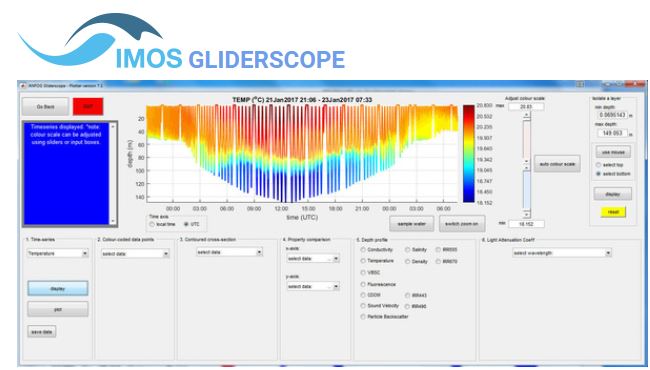Resources

OceanGliders Format User Manual
The working group on the OceanGliders common format is pleased to announce that the format user manual is available on Github for consultation and comment. The manual should be used by Data Assembly Centers (and optionally glider groups) to start the implementation of the new format and checker. The official version 1.0 of the format should be published with a DOI by the end of the year. An example of a data set will soon be available in the repository. Vocabularies collections will be available in the repository later this year. You can use the issues and discussion section to comment about the format.
This community tool will be used by the OceanGliders data management group to work on the evolution of the format.
EGO gliders data processing chain
The EGO data processing chain decodes, processes, formats and performs quality control on glider data and metadata. The decoder performs the following actions for a glider deployment:
- Decode and format the glider deployment data and metadata into an EGO NetCDF time series file
- Apply Real Time Quality Control (RTQC) tests on EGO NetCDF time series file,
- For Slocum gliders, estimate subsurface currents and store them into the EGO file,
- Generate NetCDF profile files from EGO file data and apply specific RTQC tests to them.
The decoder manages Slocum, SeaGlider and SeaExplorer gliders observations.
IOOS National Glider Data Assembly Center Wiki
This wiki is a collection of documents and resources describing the NetCDF file specification, data provider registration and data set submission processes for contributing real-time and delayed-mode glider data sets to the U.S. IOOS National Glider Data Assembly Center (NGDAC).
A toolkit for processing Seaglider base station NetCDF files: despiking, smoothing, outlier detection, backscatter, fluorescence quenching, calibration, gridding, interpolation.
Python tool to check your datasets vs compliance standards
Repo for the IOOS Glider DAC for site, scripts, and tools.
Quality Assurance of Real Time Oceanographic Data (QARTOD) and other Quality Control tests implemented in Python.
GLIDERSCOPE is a standalone Win/Mac software package designed to give you the power to visualise glider data effortlessly via a convenient graphical user interface. By using the freely available GLIDERSCOPE software, anyone can examine NetCDF files they have downloaded, filter out bad data, interactively isolate segments of data and apply a variety of useful data graphical visualisation techniques to examine the data.
A framework to quality control oceanographic data
Documents
EGO Glider Data Management Page
Here are some documents that relate to EGO data management.
EGO gliders user’s manual NetCDF conventions and reference tables Version 1.0
This document specifies the NetCDF file format of EGO-gliders that is used to distribute glider data, metadata and technical data. It documents the standards used therein; this includes naming conventions as well as metadata content.
Good procedures to manage OceanGliders data with Coriolis
This document specifies the good procedures for gliders data management if Coriolis is your Data Assembly Centre (DAC) or Global DAC.
Visualizing Glider Data
Tools and tutorials to help users apply and visualize data
The Gulf AUV Network and Data Archiving Long-term Storage Facility is an aid to AUV pilots operating in the Gulf of Mexico. GANDALF provides real-time vehicle positioning information via a maps-based interface with dashboard display, plots of flight and science sensors, Google Earth KMZ file generation and access to processed data files.










